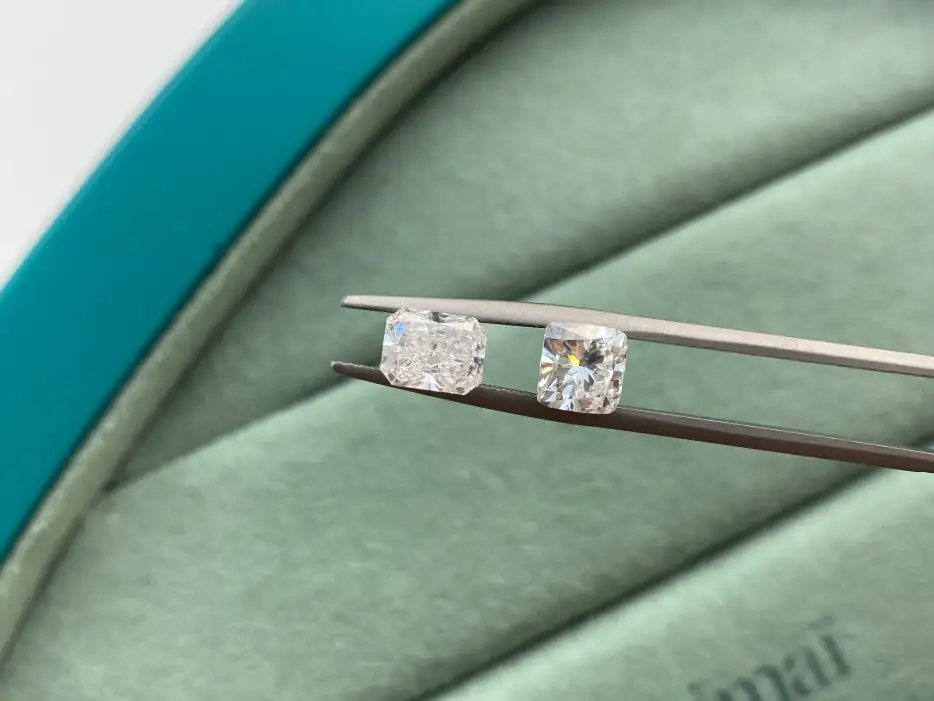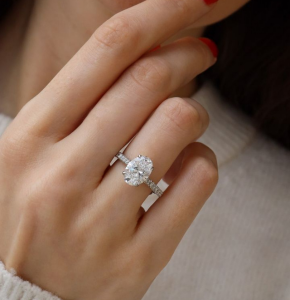Shopping Bag
No products in the cart.

The appeal of lab-grown diamonds is that they are made ethically with a minimal environmental impact. On the other hand, mined diamonds are a natural wonder that have captivated people for centuries, crystallising deep inside the Earth for millions, if not billions of years.


WHY CHOOSE LAB-GROWN DIAMONDS?
They are ethically made, sustainable, and good value. Most importantly, they are atomically homogeneous to a natural diamond and impossible to distinguish with the most trained eye. Only high-tech machinery can detect the difference in carbon growth patterns within a diamond to determine whether its origin is from a lab or the Earth. They are quality controlled and thus have fewer imperfections and higher availability for fashion-forward, modern consumers. It is a conscious product of sustainability and responsible practices in the jewellery industry. While it is a luxury product, the disadvantage of lab-grown diamonds is that they are worth less than their natural counterparts and thus, considered affordable luxury rather than a Veblen product.
Mined diamonds have an alluring journey of formation deep within the Earth. They are also embedded as the symbol of love. Ideally, their mining and manufacturing should also empower local communities and contribute to the welfare of a country. However, herein lies the fundamental disadvantage, their supply chain is ambiguous as it is very difficult to maintain a “paper trail” or track natural diamonds from mine to finger. This is because after mining, it typically passes many hands in the midstream, being traded in rough form several times before being manufactured and then traded as polished form to the end user. Additionally, miners have enjoyed near-monopolistic conditions for many years in controlling and fragmenting the midstream market. Hence, it is not clear how effectively humanitarian, ethical and environmental standards are upheld at each stage. Furthermore, the mining of diamonds is demanding to the environment causing habitat disruption, water pollution along with many other problems if not handled appropriately. Over the years, the lack of transparency and corruption has tarnished the shine of natural diamonds. Lastly, they are significantly more expensive than lab-grown diamonds.
Natural diamonds are formed within the Earth's mantle under high pressure and high temperature, around 90 - 120 miles below the surface. Carbon atoms in the mantle cause it to become a crystal structure due to the intense heat and pressure. Over millions of years, the carbon-bearing materials get transported to the mantle. The carbon atoms bond together in a repeating pattern and form diamond crystals. Diamond mining occurs when these volcanic pipes or kimberlite deposits are found and extracted.
Lab-grown diamonds are made by replicating the conditions under which mined diamonds form. A small piece of natural diamond known as a seed is placed in a chamber. With the high temperature and high-pressure method, the carbon source material is melted and dissolved under extreme heat and pressure. This gradually builds layers onto the seed. In the chemical vapor deposition method, the carbon atoms form a gas and are deposited onto the seed. The diamond is then cut, polished, and graded similar to a natural diamond.
Lab-grown diamonds are not only made ethically and sustainably, but they are better value for the modern consumer. They are created with a strong mindfulness for the environment and represent style, expression, but also love and commitment without compromising on quality - they are exactly homogenous to natural diamonds atomically and visually to the naked eye. In fact, lab-grown diamonds empower the modern consumer to spend more on valuable experiences alongside the perfect diamond ring to suit any occasion.


Yes. Lab grown diamonds are chemically and physically identical, both starting as carbon seeds and pressurised to life. In fact, the Federal Trade Commission recently changed the definition of a diamond by removing the word natural and the GIA grades them the same way.
Yes. Lab created diamonds are priced based on the 4Cs of diamond quality, exactly the same as mined. Lab grown diamonds are currently up to 60% cheaper than mined diamonds of the exact same caliber, making them far more cost effective. On average, it will cost around £3,450 for a 1ct lab grown diamond that has an excellent cut, F colour and VS2 clarity.
You can’t. Even specialist gemologists and seasoned diamond traders cannot tell the difference between lab grown and mined diamonds with the naked eye, it takes specialist magnifying equipment that looks at the structure of atoms to notice any differences. Accuracy is never guaranteed, however.
Yes. Lab grown diamonds are graded on cut, clarity, colour and carat, just the same as mined diamonds. The GIA (Gemological Institute of America) and IGI (International Gemological Institute) are the key institutions to grade and issue certificates for lab diamonds.
A lab-created diamond is a genuine diamond, whereas a cubic zirconia is not. It is softer, does not look the same to the naked eye and does not contain carbon and so doesn’t qualify as a diamond. It’s a wannabe.
Working hours: Mon-Fri 10-18h CET
Contact: 971521866038
Unit No. 45-H-2
Almas Tower,
Plot No. JLT-PH1-A0
Jumeirah Lakes Towers,
Dubai
United Arab Emirates.

Sign up to be the first to know of our new arrivals, seasonal offers and special announcements.
*T&C Apply
We're glad to have you join us as a part of our journey!

